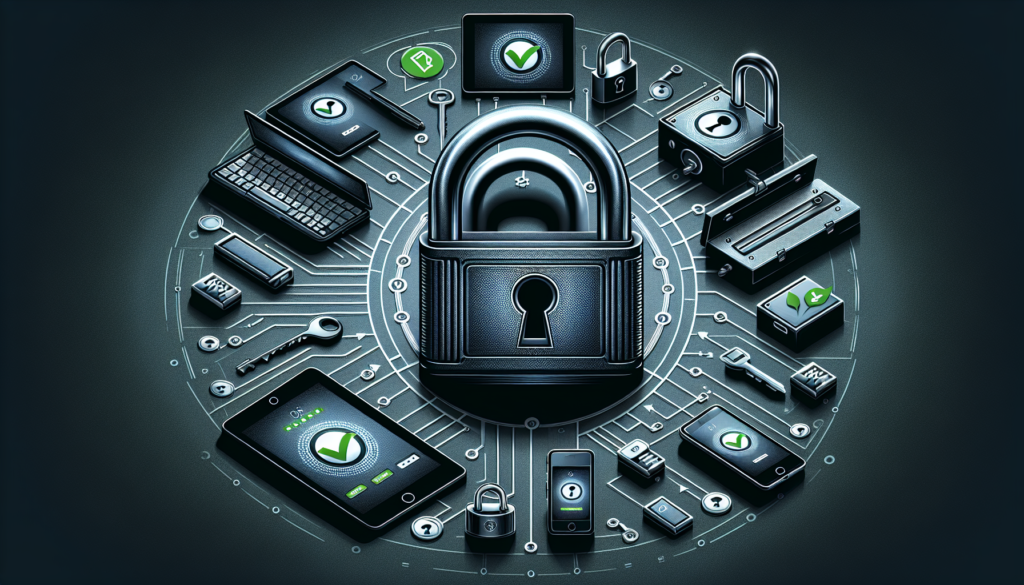Imagine having all your passwords securely tucked away within arm’s reach, no matter where your adventures take you. KeePass Portable offers just that—a powerful and portable solution for managing your sensitive information. With this robust tool, you can carry an encrypted database of all your passwords right on your USB stick, providing seamless access and unsurpassed security as you move from home to office to the wild blue yonder. KeePass Portable ensures you always have the keys to your digital kingdom, anytime and anywhere, without ever compromising on safety.
Understanding KeePass Portable
What is KeePass Portable?
KeePass Portable is your digital vault on the go. It’s a lightweight, open-source password manager that securely stores all your important passwords in one encrypted database. But here’s the kicker: it’s designed to run directly from a USB stick or cloud drive without installation on the host computer. This means you have access to your passwords wherever you are, whether you’re at work, at a friend’s house, or anywhere in between.
Differences between KeePass and KeePass Portable
The main difference between KeePass and KeePass Portable is that KeePass Portable doesn’t require installation. You might be wondering why this matters. Well, not needing to install the software means you can carry KeePass Portable on a flash drive and use it on any computer without leaving any personal data behind. Meanwhile, KeePass typically needs to be installed on each computer you use, limiting its flexibility.
Advantages of using a portable password manager
Using a portable password manager like KeePass Portable brings several advantages. Imagine you’re in a situation where you need access to your accounts, but you’re not on your personal computer. KeePass Portable can be a lifesaver, providing secure access to your passwords without the need to trust or install software on an unknown machine. Plus, it keeps your sensitive data out of the vulnerable reaches of the internet, as your password database doesn’t need to touch the web unless you choose to synchronize it.
Getting Started with KeePass Portable
System requirements and compatibility
Before launching into the world of secure password management with KeePass Portable, you’ll want to ensure your system meets the minimal requirements. Fortunately, they’re not demanding. KeePass Portable works with various versions of Windows, and there are compatible versions or alternatives for Linux and macOS users. The best part is that it’s light on resources, so even older computers can run it without a hitch.
Downloading and installing KeePass Portable
To get started, you’ll download KeePass Portable—no install needed, remember? Download the right version for your operating system. Once it’s on your USB stick or cloud drive, open the KeePass.exe file to start using it. The first time you open KeePass Portable, it might feel like you’re installing it, but really, you’re just setting up your database.
Creating your first password database
When you create your first password database, you’re setting up the very core of KeePass Portable. This database is where all your passwords will live. As you create it, the software will prompt you to name it and select a location to save it. Remember, this is your secure vault, so choosing a place you’ll remember—and can access from different devices—is key.

Master Password and Key Files
Setting up a strong master password
Your master password is like the key to your vault. You want it to be complex and unguessable because if anyone cracks it, they have access to all your other passwords. Mix up letters (both upper and lower case), numbers, and special characters. The longer and more complex, the better. Make it something you can remember, but not something easily guessed by someone else.
Understanding and using key files for added security
Think of key files as an extra padlock on your vault. It’s an additional file that KeePass Portable uses in conjunction with your master password to unlock your database. It’s a physical file that you keep separate from your database – preferably on a different device. This way, even if someone gets your master password, they can’t access your database without this key file.
Best practices for master password and key file management
For top security, keep your master password in your head and your key file on a separate device. That way, even if your USB stick with KeePass Portable is lost or stolen, the thief would have a very hard time accessing your passwords without the key file. And whatever you do, don’t keep a written copy of your master password with your USB stick!
Storing Passwords Securely
Creating new entries and organizing passwords
Inside KeePass Portable, you can create entries for all of your accounts. Each entry can hold not just a password, but also a username, URL, and notes. You can organize these entries into groups, much like folders, which makes finding them later a whole lot easier, especially if you have a lot.
Using KeePass Portable’s password generator feature
One of your new best friends within KeePass Portable will be the password generator. This handy feature creates strong, random passwords for you, so you don’t have to come up with them yourself. It’s customizable, so you can set parameters like length and complexity to meet different sites’ password requirements.
Managing and maintaining your password database
To keep your password database clean and up-to-date, you should regularly review and update your entries. Remove passwords for accounts you no longer use, update passwords you’ve had to change, and always double-check your entries for accuracy. A well-maintained database is a secure one.

Accessing Your Passwords on Different Devices
Synchronizing your database across devices
If you’re using KeePass Portable across multiple devices, you’ll want to keep your database synchronized. It’s a manual process, but it ensures that you have the latest version of your password database wherever you go. Simply copy the updated database file to KeePass Portable on your other devices as needed.
Using cloud storage with KeePass Portable
If carrying around a USB stick isn’t your thing, you can use cloud storage to house your KeePass Portable database. This way, you can access it from any device that has internet access. But remember, this introduces an element of risk, since your database is now accessible online. Use strong encryption and a reliable cloud service to mitigate these risks.
Avoiding common risks when accessing passwords remotely
Accessing your passwords remotely is super convenient, but it comes with risks. Public computers might have malware that could compromise your data. Always ensure that you’re using a trusted machine and consider running portable antivirus software if you’re unsure. Most importantly, never leave your KeePass Portable running if you step away from the computer.
Advanced Features and Customization
Customizing database fields and templates
KeePass Portable doesn’t just let you store passwords—it’s highly customizable. Add custom fields to your entries if the default ones don’t cover all the data you want to keep. You can also create templates for different types of accounts, speeding up the process of adding new entries.
Integrating plug-ins with KeePass Portable
Just when you thought KeePass Portable couldn’t get any better, you discover its plug-in ecosystem. These plug-ins can add additional features, like advanced synchronization, integration with web browsers, or even automate data entry. Explore the available plug-ins to tailor KeePass Portable to your needs.
Automating tasks with URL overrides and command-line options
For the tech-savvy, KeePass Portable offers URL overrides and command-line options for automating tasks. Use URL overrides to integrate with browsers or other applications, customizing how URLs in your database entries are opened. Command-line options can help automate opening databases, adding entries, and much more.
Security Measures and Encryption
Understanding KeePass Portable encryption
Your KeePass Portable database is fortified with robust encryption to keep your data safe. Knowing that your passwords are protected by such strong encryption will give you peace of mind, especially when taking your database on the road.
The security behind the TwoFish and AES algorithms
KeePass Portable uses the industry-standard encryption algorithms TwoFish and AES. Both are considered highly secure by experts around the world. This encryption is what scrambles your data, making it unreadable to everyone except those with the master password and key file.
Ensuring secure database backups
Even with encryption, it’s important to keep backups of your KeePass Portable database. Protection against data corruption, loss, or theft is vital. Ensure your backups are as secure as your main database, keep them updated, and store them in a safe location.
Usability and User Experience
Customizing the user interface for better efficiency
KeePass Portable allows you to adjust the interface to suit your preferences. This means you can arrange panels and entries in a way that makes navigating your database fast and efficient. A personalized setup can help you manage your passwords more effectively.
Shortcuts and hotkeys for quick access
You can assign shortcuts and hotkeys to perform frequent actions quickly. These keyboard tricks can save you time when adding new entries, searching for existing ones, or copying data to the clipboard. They’re a boon for busy users who value efficiency.
Localization and language support
KeePass Portable offers support for various languages, making it accessible to a global user base. If English isn’t your first language, simply switch to one that feels more comfortable for you.
Troubleshooting Common Issues
Recovering from forgotten master passwords
Forgetting your master password can be a nightmare, but don’t panic. Unfortunately, there is no backdoor or password recovery option for KeePass Portable — this strict design is what keeps your database secure. You must reset and start anew if you cannot remember your master password. Let this be a lesson in ensuring your master password is memorable but secure.
Resolving synchronization conflicts
If you’re maintaining your password database across multiple devices manually, conflicts can occur. This usually happens when changes are made concurrently on different versions of the database. Resolving this can be as simple as determining which version is the most up-to-date or manually merging changes. Systematic synchronization habits can prevent these conflicts.
Handling corrupted databases and other technical problems
Technical issues, like corrupted databases, can occur. Regularly backing up your database protects against data loss if corruption happens. If you come across other technical problems, the KeePass Portable community forums can be an invaluable resource for advice and solutions.
Best Practices for KeePass Portable Users
Creating a robust security protocol
Your security protocol should be your bible for password management. It might include guidelines on creating secure passwords, how often to change them, and how to properly backup and sync your database. Stick to your protocol for consistent security.
Training and habits for secure password management on the go
Developing secure password habits is just as important as the software itself. Regularly updating passwords, avoiding public Wi-Fi when accessing sensitive information, and being mindful of where and when you access your passwords are key practices.
Planning for emergency access and disaster recovery
Consider what would happen in an emergency. Who would access your accounts if you couldn’t? Planning for such situations is critical. Ensure someone you trust knows how to retrieve your passwords in an emergency or establish a secure way for them to gain access.
With KeePass Portable, secure password management on the go is not just possible; it’s practical. Remember these tips, and you’re well on your way to maintaining a robust and secure digital life, no matter where your travels take you.

